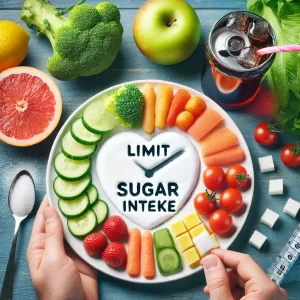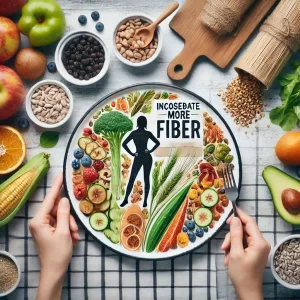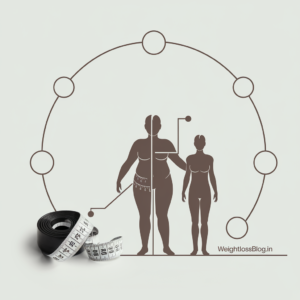The Essential Do’s and Don’ts of the South Beach Diet for Weight Loss
Introduction
The South Beach Diet is a low-carb, heart-healthy eating plan that emphasizes lean proteins, healthy fats, and low-glycemic carbohydrates. While the diet allows for flexibility in the later phases, following the right approach is key to achieving your weight loss goals. This list of do’s and don’ts  will guide you through the South Beach Diet and help you stay on track for sustainable, long-term weight loss.
will guide you through the South Beach Diet and help you stay on track for sustainable, long-term weight loss.
Do’s of the South Beach Diet
1. Do Focus on Lean Proteins and Healthy Fats
Lean proteins and healthy fats are the foundation of the South Beach Diet, especially during Phase 1. Make sure to include a source of lean protein, such as chicken, turkey, fish, or tofu, in every meal, along with healthy fats like olive oil, avocado, or nuts. These foods will keep you full and satisfied while promoting fat loss.
Focusing on lean proteins and healthy fats will help stabilize your blood sugar levels, reduce cravings, and support sustainable weight loss.
2. Do Choose Low-Glycemic Carbohydrates
In Phase 2 of the South Beach Diet, you’ll gradually reintroduce healthy carbohydrates like whole grains, fruits, and legumes back into your diet. When choosing carbs, focus on low-glycemic options that are digested more slowly, such as quinoa, brown rice, and berries. These foods will help maintain steady blood sugar levels and prevent insulin spikes, which can lead to fat storage.
Low-glycemic carbs provide long-lasting energy and support weight loss by keeping you full for longer.
3. Do Plan Your Meals Ahead of Time
Meal planning is essential for success on the South Beach Diet, especially during the restrictive Phase 1. Plan your meals and snacks for the week, focusing on lean proteins, non-starchy vegetables, and healthy fats. Having a plan will make it easier to stick to the diet and avoid reaching for high-glycemic, processed foods when you’re hungry.
Consider batch cooking or meal prepping on the weekends to save time during the week and ensure you always have healthy, South Beach Diet-friendly meals ready to go.
4. Do Incorporate Physical Activity
Physical activity is an important part of the South Beach Diet and can help boost your weight loss efforts. Regular exercise, such as walking, swimming, or strength training, can help increase your metabolism and promote fat loss. Aim for at least 30 minutes of exercise per day to support your weight loss goals and improve overall health.
Find activities that you enjoy and incorporate them into your daily routine to stay motivated and active.
5. Do Stay Hydrated
Drinking enough water is essential for overall health and weight loss. Proper hydration supports digestion, helps flush out toxins, and can even reduce feelings of  hunger. Aim for at least 8 glasses of water per day, and consider drinking herbal teas or adding lemon to your water for flavor.
hunger. Aim for at least 8 glasses of water per day, and consider drinking herbal teas or adding lemon to your water for flavor.
Staying hydrated will help prevent overeating and keep your body functioning optimally throughout the diet.
Don’ts of the South Beach Diet
1. Don’t Skip Meals
Skipping meals can lead to overeating later in the day and disrupt your progress on the South Beach Diet. The program encourages balanced meals and snacks throughout the day to keep your energy levels stable and prevent hunger. Even if you’re busy, try to eat three meals a day that include lean proteins, non-starchy vegetables, and healthy fats.
Skipping meals can also lead to poor food choices, as hunger often drives us to reach for high-glycemic, processed snacks. Plan your meals in advance to avoid this common pitfall.
2. Don’t Eat High-Glycemic Carbohydrates in Phase 1
Phase 1 of the South Beach Diet is designed to stabilize blood sugar levels and reduce cravings by eliminating high-glycemic carbohydrates like bread, pasta, rice, and sugary foods. Avoid these foods during the first two weeks of the diet to jumpstart your weight loss and reset your metabolism. While it may be challenging at first, this phase is only temporary, and healthy carbs are reintroduced in Phase 2.
Stick to the guidelines of Phase 1 to see the best results and set yourself up for success as you move into the later phases of the diet.
3. Don’t Forget About Portion Control
While the South Beach Diet encourages nutrient-dense, filling foods, it’s still important to practice portion control, especially with higher-calorie foods like nuts, seeds, and oils. Even healthy fats can add up in calories if you’re not mindful of portion sizes. Use measuring  cups, a food scale, or the South Beach Diet app to track your portions and ensure you’re staying on track with your weight loss goals.
cups, a food scale, or the South Beach Diet app to track your portions and ensure you’re staying on track with your weight loss goals.
Being mindful of portion sizes will help you avoid overeating and maximize the benefits of the diet.
4. Don’t Neglect Vegetables
Non-starchy vegetables are a key component of the South Beach Diet, particularly in Phase 1. These vegetables are low in calories and high in fiber, making them an essential part of your meals. Be sure to fill your plate with a variety of colorful vegetables, such as leafy greens, bell peppers, broccoli, and cauliflower, to ensure you’re getting plenty of nutrients while keeping your calorie intake low.
Incorporating a variety of vegetables into your meals will help keep you full and satisfied while supporting weight loss.
5. Don’t Be Too Hard on Yourself
Weight loss is a journey, and there will be days when you may slip up or indulge in a high-carb meal. It’s important not to be too hard on yourself when this happens. Instead, focus on getting back on track with your next meal and making healthier choices moving forward. The South Beach Diet is designed to be flexible, especially in the later phases, so give yourself grace and remember that progress, not perfection, is the goal.
Celebrate your small victories along the way, and stay committed to your long-term health and wellness.
Conclusion
The South Beach Diet is a highly effective and heart-healthy approach to weight loss that emphasizes lean proteins, healthy fats, and low-glycemic carbohydrates. By following these essential do’s and don’ts, you can maximize your success on the South Beach Diet and achieve your weight loss goals while maintaining a balanced, nutritious eating plan.
Focus on whole, unprocessed foods, track your meals, and stay active to ensure long-term success on your South Beach journey.